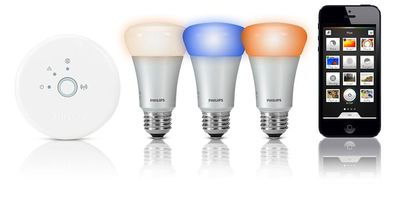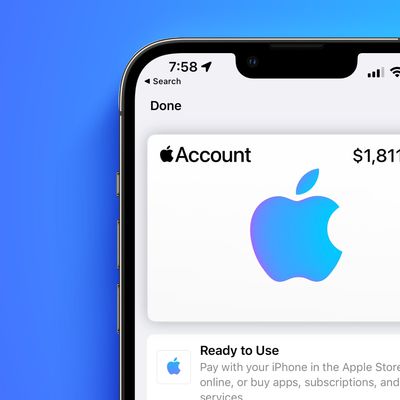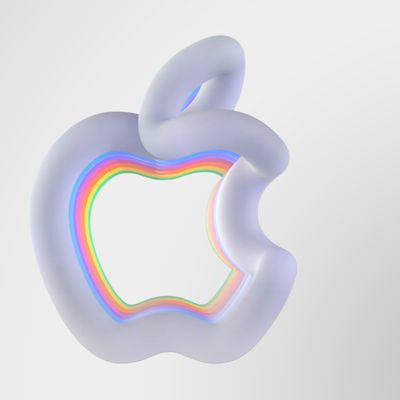Philips 'Hue' Receives Major Update With Geofencing, Visual Alerts, and More
Late last year, Philips launched its "Hue" lighting system, offering sets of wireless-enabled LED lightbulbs that allow users to remotely control their lighting, including adjusting to a rainbow of colors, from an iOS app. Hue has been exclusively sold through Apple's online and retail stores, and Philips has been working hard to both bring more features to the system and to open it up to developers to build even more functionality.

Philips today announced the "next phase" of Hue with a major update bringing a number of new features. Perhaps most interesting is integration with If This Then That (IFTTT) protocols to allow Hue to provide visual alerts for a wide variety of situations.
The next generation of the Hue app (version 1.1) can now hook up to your essential internet services via your smartphone or tablet, meaning your bulbs can act as indicators for weather, stock quotes, sports scores, email, social media and more. They can be set to behave in any way you choose. For example, to change color if it’s going to rain; to blink if you receive an urgent email, Facebook message from someone special; illuminate gradually as the sun sets; or even flash in your sports team’s colors when they score.
The new Version 1.1 of Hue also adds geofencing, automatically turning lights on as the user approaches their home and turning them off as they leave, as well as other customizable options. The update also brings recurring schedules, allowing users to simply set a schedule once and have it repeat each day.
Philips is also announcing an expansion in availability for its Hue lighting system, with a number of new outlets including Apple resellers and Amazon.com now offering starter packs and individual bulbs.
The Hue starter pack ($199.95) with core hardware and three bulbs and single bulbs ($59.95) are available through Apple. The Philips Hue universal app for iOS devices is a free download from the App Store. [Direct Link]
Popular Stories
Since the iPhone X in 2017, all of Apple's highest-end iPhone models have featured either stainless steel or titanium frames, but it has now been rumored that this design decision will be coming to an end with the iPhone 17 Pro models later this year.
In a post on Chinese social media platform Weibo today, the account Instant Digital said that the iPhone 17 Pro models will have an aluminum...
Apple is continuing to refine and update iOS 26, and beta three features smaller changes than we saw in beta 2, plus further tweaks to the Liquid Glass design. Apple is gearing up for the next phase of beta testing, and the company has promised that a public beta is set to come out in July.
Transparency
In some apps like Apple Music, Podcasts, and the App Store, Apple has toned down the...
In select U.S. states, residents can add their driver's license or state ID to the Wallet app on the iPhone and Apple Watch, providing a convenient and contactless way to display proof of identity or age at select airports and businesses, and in select apps.
Unfortunately, this feature continues to roll out very slowly since it was announced in 2021, with only nine U.S. states, Puerto Rico,...
Apple will launch its new iPhone 17 series in two months, and the iPhone 17 Pro models are expected to get a new design for the rear casing and the camera area. But more significant changes to the lineup are not expected until next year, when the iPhone 18 models arrive.
If you're thinking of trading in your iPhone for this year's latest, consider the following features rumored to be coming...
Apple is expanding the ability to add an Apple Account Card to the Wallet app to more countries, according to backend Apple Pay changes.
With iOS 15.5, Apple updated the Wallet app to allow users to add an Apple Account Card, which displays the Apple credit balance associated with an Apple ID.
If you receive an Apple gift card, for example, it is added to an Apple Account that is also...
Three out of four iPhone 17 models will feature more RAM than the equivalent iPhone 16 models, according to a new leak that aligns with previous rumors.
The all-new iPhone 17 Air, the iPhone 17 Pro, and the iPhone 17 Pro Max will each be equipped with 12GB of RAM, according to Fixed Focus Digital, an account with more than two million followers on Chinese social media platform Weibo. The...
Apple should unveil the iPhone 17 series in September, and there might be one bigger difference between the Pro and Pro Max models this year.
As always, the Pro Max model will be larger than the Pro model:iPhone 17 Pro: 6.3-inch display
iPhone 17 Pro Max: 6.9-inch displayGiven the Pro Max is physically larger than the Pro, it has more internal space, allowing for a larger battery and...
The calendar has turned to July, meaning that 2025 is now more than half over. And while the summer months are often quiet for Apple, the company still has more than a dozen products coming later this year, according to rumors.
Below, we have outlined at least 15 new Apple products that are expected to launch later this year, along with key rumored features for each.
iPhone 17 Series
iPho...





















